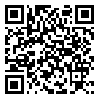BibTeX | RIS | EndNote | Medlars | ProCite | Reference Manager | RefWorks
Send citation to:
URL: http://jdc.tums.ac.ir/article-1-37-en.html
Background and Aim: Cutaneous drug reaction is a common side effect of antiepileptic drugs and a frequent cause of treatment discontinuation. These reactions ranges can be a mild maculopapular rash to Stevens-Johnson Syndrom and toxic epidermal necrolysis. Among the traditional anticonvulsant drugs the aromatic compounds Phenytoin, Phenobarbital and Carbamazepin have been associated with relatively higher incidences of cutaneous reactions which can hospitalized the patient. Some of the newer drugs also can induce this problem, especially lamotrigine.
Methods: All records of patiens who were hospitalized at hospitals related to Islamic Azad as well as Rasol Akram hospital with a diagnosis of cutaneous drug reaction to anticonvulsant therapy in 8 years period were reviewed.
Results: The most common culprit was phenytoin (32%) and the least common drug was lamotrigin (3%).
Conclusion: Cutaneous reaction to anticonvulsant drugs is common and sometimes may be life threatening which needs serious treatment options.
Received: 2011/01/4 | Accepted: 2011/02/16 | Published: 2013/07/16
| Rights and permissions | |
 |
This work is licensed under a Creative Commons Attribution-NonCommercial 4.0 International License. |





